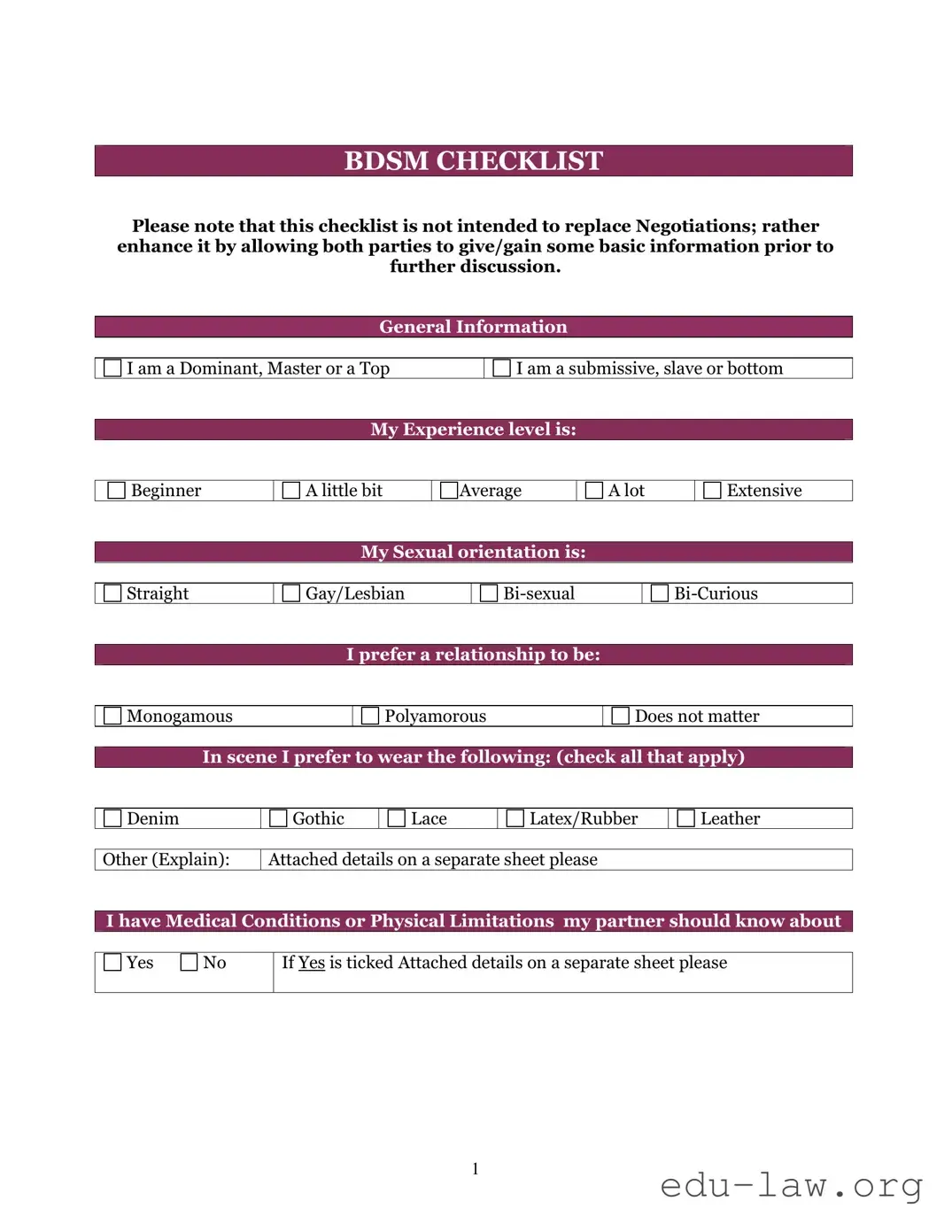What is the BDSM Checklist form?
The BDSM Checklist form serves as a comprehensive tool for individuals or partners involved in BDSM to communicate their interests, limits, and preferences. This checklist provides a structured way to discuss various activities that may be part of the BDSM experience, helping to ensure that all participants are on the same page. By using this form, individuals can openly share their desires and boundaries, fostering trust and safety within the relationship.
Why is it important to use a checklist in BDSM?
The checklist is essential in BDSM because it acts as a communication bridge between partners. Engaging in BDSM can involve complex dynamics that require clear understanding and consent. By utilizing a checklist, participants can openly address what activities excite them, what they are curious about, and what they would prefer to avoid. This proactive approach helps prevent miscommunication and enhances the overall experience by ensuring that all parties feel comfortable and respected.
What types of activities are typically listed on a BDSM Checklist?
Typically, a BDSM Checklist includes a variety of activities ranging from bondage and sensory play to role-playing and impact play. Each partner can mark their interests, comfort levels, and hard limits. This allows for each individual’s preferences to be clearly outlined, providing insight into what might be enjoyable or off-limits during play. The checklist not only covers physical activities but also emotional dynamics, such as power exchange and aftercare considerations.
How should partners use the checklist together?
Partners should approach the checklist as a collaborative conversation starter. It is best to set aside dedicated time to review the form together, discussing each item in detail. Encourage an open and honest dialogue about why certain activities are appealing or concerning. This process promotes understanding and helps clarify any misunderstandings. Revisiting the checklist regularly can also adapt to changing interests or boundaries over time, ensuring that each individual feels heard and secure in their partnership.
What should someone do if they feel uncomfortable during the checklist discussion?
If at any point someone feels uncomfortable during the discussion of the checklist, it is vital to pause the conversation. Respect for personal feelings and boundaries should always come first. One might want to express their hesitation or discomfort openly, allowing space for a gentle and reassuring response from their partner. It’s crucial to remember that consent is an ongoing process, and taking the time to address discomfort can strengthen trust and intimacy within the relationship.






